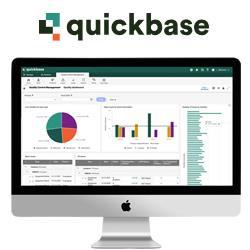Global Solar PV Pipeline Surpasses 200 GW, IHS Says
With the United States in the lead, due in large part to the recent extension in the countrys solar investment tax credit (ITC) late last year, the global solar photovoltaic pipeline now exceeds 200 gigawatts (GW). At a combined capacity of 110 GW, projects in the U.S., China and Brazil make up half of the current PV pipeline, according to IHS Inc. (NYSE: IHS), the leading global source of critical information and insight.
ENGLEWOOD, Colo. (February 9, 2016) - With the United States in the lead, due in large part to the recent extension in the countrys solar investment tax credit (ITC) late last year, the global solar photovoltaic pipeline now exceeds 200 gigawatts (GW). At a combined capacity of 110 GW, projects in the U.S., China and Brazil make up half of the current PV pipeline, according to IHS Inc. (NYSE: IHS), the leading global source of critical information and insight.
"A large share of the planned projects is still immature, with developers scouting for tenders and other opportunities to sign power-purchase agreements," said Josefin Berg senior analyst for IHS Technology. "The previous panic to complete project phases ahead of schedule has reverted to a development pipeline responding to demand and contract fulfilment."
The biggest growth of the global solar pipeline has been in the United States, where 16 GW of new projects entered the pipeline in 2015; at the same time, 10 GW of tracked projects were installed or entered construction. As a result of the ITC extension announced in December 2015, the U.S. pipeline is now changing shape, according to the latest IHS Solar Deal Tracker.
Early-stage projects that faced the challenge to complete development and break ground, in order to reach completion prior to the previous deadline at the end of 2016, are now relaxing their schedules, as they do not need to enter construction before 2019 to benefit from the 30 percent credit. "We expected to see some hectic activity from late-coming developers in 2016; however after the ITC extension, developers have calmed down," said Christine Beadle, senior analyst at IHS Technology.
On the opposite end of the global spectrum is the United Kingdom, where the PV pipeline of pre-construction projects decreased by more than 4 GW in 2015. Projects continue to be built; however, few new projects have started development, because of the looming expiration of the Renewable Obligation Certificates (ROC) scheme in April 2016.
Economies of scale, and an inclination for oversized projects, are expected to increase system sizes. Two thirds of the global PV pipeline capacity are projects larger than 50 MW. Developers in both the United States and China target economies of scale by implementing large projects in areas with abundant land. The oversizing of module capacity in relation to the output inverter capacity also raises total system sizes. In the United States, IHS tracks projects where the module capacity is up to 40 percent higher than the inverters. "Among the markets with the largest pipelines, only Brazil prefers the more modest system size of 30 megawatts, as a result of regulation; however, Brazilian developers are bundling projects to reduce costs," Berg said.
The IHS Solar Deal Tracker tracks more than 45,000 PV projects across the world, in various stages of development: from completed projects to those under construction to those in the pipeline. For information about subscribing to this monthly report, contact the sales department at IHS in the Americas at +1 844 301 7334 or AmericasLeads@ihs.com; in Europe, Middle East and Africa (EMEA) at +44 1344 328 300 or technology_emea@ihs.com; or Asia-Pacific (APAC) at +604 291 3600 or technology_APAC@ihs.com.
About IHS (www.ihs.com)
IHS (NYSE: IHS) is the leading source of insight, analytics and expertise in critical areas that shape todays business landscape. Businesses and governments in more than 140 countries around the globe rely on the comprehensive content, expert independent analysis and flexible delivery methods of IHS to make high-impact decisions and develop strategies with speed and confidence. IHS has been in business since 1959 and became a publicly traded company on the New York Stock Exchange in 2005. Headquartered in Englewood, Colorado, USA, IHS is committed to sustainable, profitable growth and employs approximately 8,600 people in 32 countries around the world.
Featured Product

